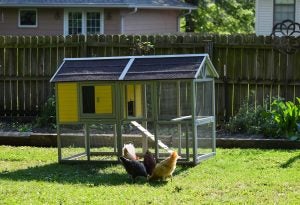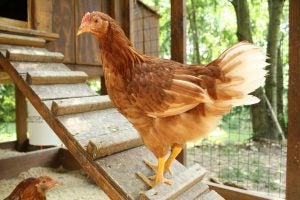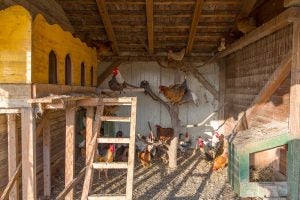One of the coronavirus’s unintended consequences was a surge in people raising of backyard chickens
Months-long stay-at-home orders connected to the global COVID-19 pandemic contributed to a resurgence of raising backyard chickens in the United States and other countries around the world. People of many walks of life were looking for ways to stay busy while thinking more deeply about where their food comes from and wondering about food scarcity. Because of these trends, evidence points to chickens surging in popularity among landowners.
While those unfamiliar with raising chickens might think they need lots of space, this is not true. Even smaller backyards can comfortably contain a modest flock of six hens. There is a large variety of purchasable or buildable coops and runs that give consumers the flexibility to help chickens fit onto most properties effectively. Just make sure to consider local ordinances before you purchase your chicks.
Here are just a few reasons why backyard chickens began thriving during the COVID-19 pandemic and how the virus may impact the future of chicken keeping.

They provide locally sourced food
The fear of contaminants — whether biological, chemical, or physical — when it comes to purchasing food products has long been a concern among consumers. With the COVID-19 pandemic, there has been a growing worry about food products that have come into contact with an infected individual.
One reason backyard chickens are thriving is that they provide locally sourced food products. Harvesting eggs from one’s own backyard can help lessen the fear of purchasing contaminated products. Backyard chickens allow owners to know where their food came from and who or what it has come into contact with.
This increasing turn toward locally sourced food has numerous benefits that may become more obvious in the months to come. One of the main benefits is the small carbon footprint it leaves. With more people keeping chickens in their backyards and harvesting their own eggs, the pollution caused by transporting food products is greatly reduced.
They positively impact the issue of food scarcity
COVID-19 had a huge impact on food production facilities and grocery stores. Because of social distancing guidelines, production facilities and grocery stores had to decrease the number of employees that can work at a time. This resulted not only in less food being produced, but also less food being put on grocery store shelves. This issue of food scarcity put many people in a very difficult position in which they have been unable to purchase staple food items for their families.
Backyard chickens really began thriving during the pandemic partly because of their positive impact on food scarcity. They allow individuals who are able — as in, those who have large backyards as well as the time and money required for keeping chickens — to produce some of their own food. In turn, this ensures that those who are unable to keep their own chickens have access to the food produced by production plants. According to Chickens and More, some breeds of chickens can lay up to 300 eggs per year — that’s 25 cartons of eggs that are left on grocery store shelves for non-chicken-owners to purchase.

They encourage self-sufficiency and responsibility
The pandemic, particularly how long it lingered and the extended duration of travel and contact limitations, demonstrated the importance of self-sufficiency to the general public. With stricter regulations on grocery and retail stores and limited access to some resources, people have realized how important it is to be able to provide for oneself. The pandemic has shown that dependence solely on modern infrastructure can be dangerous.
One reason backyard chickens became especially popular and thriving during the pandemic is because they encourage self-sufficiency and help establish a sense of responsibility. Backyard-chicken owners are able to rely less on grocery stores and food production plants and more on themselves in terms of sources of food.
Developing a sense of responsibility in one’s own food production can help insulate individuals from instances where food production may be limited, such as a hurricane, tornado, or even just a bad farming season.

They help teach environmental sustainability
The COVID-19 pandemic has brought about an increased concern for the well-being of the environment. According to Johns Hopkins University, there are far fewer carbon dioxide emissions being pumped into the environment lately, partly due to stay-at-home orders and social distancing. This has caused many individuals to wonder about what else they can do to make a positive impact on the environment.
Backyard chickens inspire people to practice environmental sustainability, especially when it comes to managing waste. Chickens produce a lot of waste that needs to be disposed of. Especially because of stay-at-home orders, chicken owners are turning to at-home, sustainable methods such as composting when it comes to dealing with soiled chicken litter.
Not only are these sustainable composting methods beneficial for one’s own garden and yard, but they positively impact the health of the environment as well. It’s hopeful that these temporary measures of dealing with chicken litter will become a habit, prolonging the environmental benefits.
Your next steps
If you are interested in taking on the challenge of backyard chickens then you should consider either Rhode Island Reds or Plymouth Rocks. Both are egg laying powerhouses and also have a placid temperament making them easy to care for. And if you can’t choose between these two, pick the Rhode Island Reds. As the old saying goes: If you can’t pick a breed, pick a Rhode Island Red!
Chris Lesley is editor-in-chief at Chickens And More, a backyard chickens magazine.


